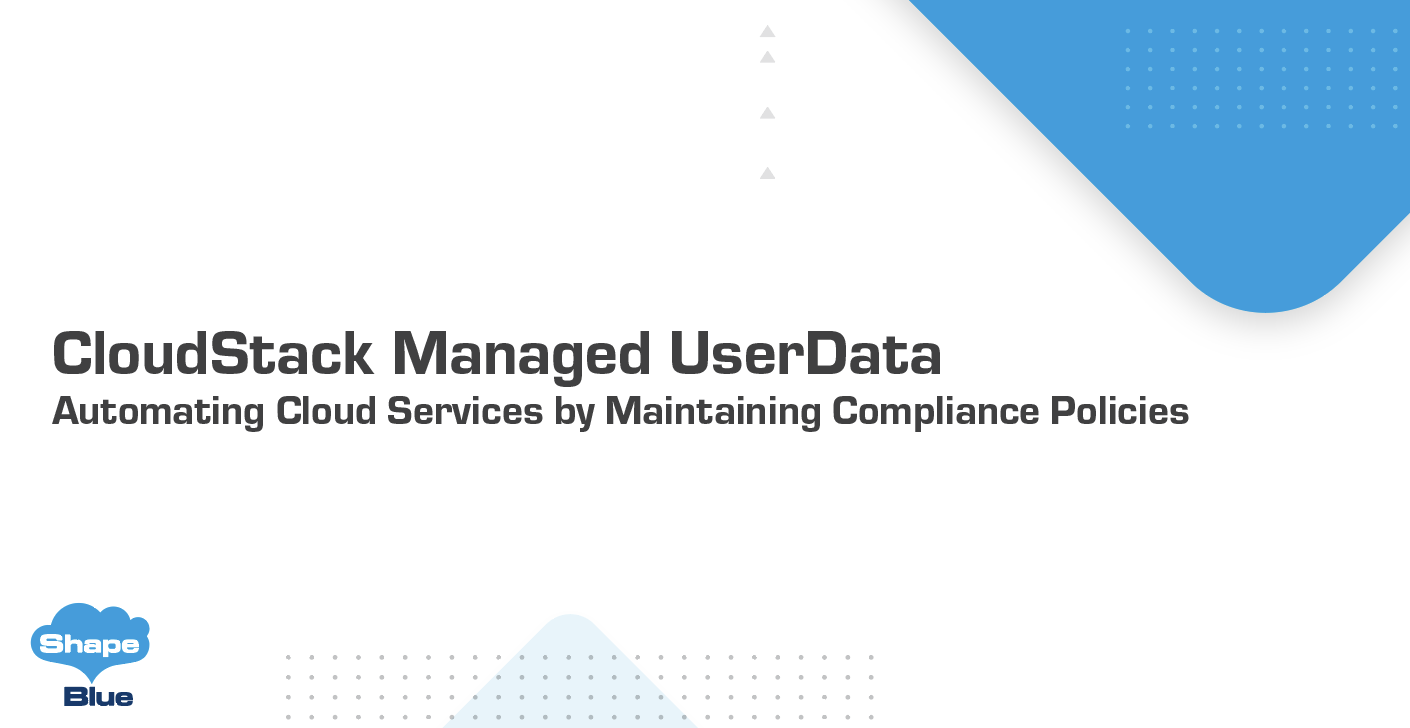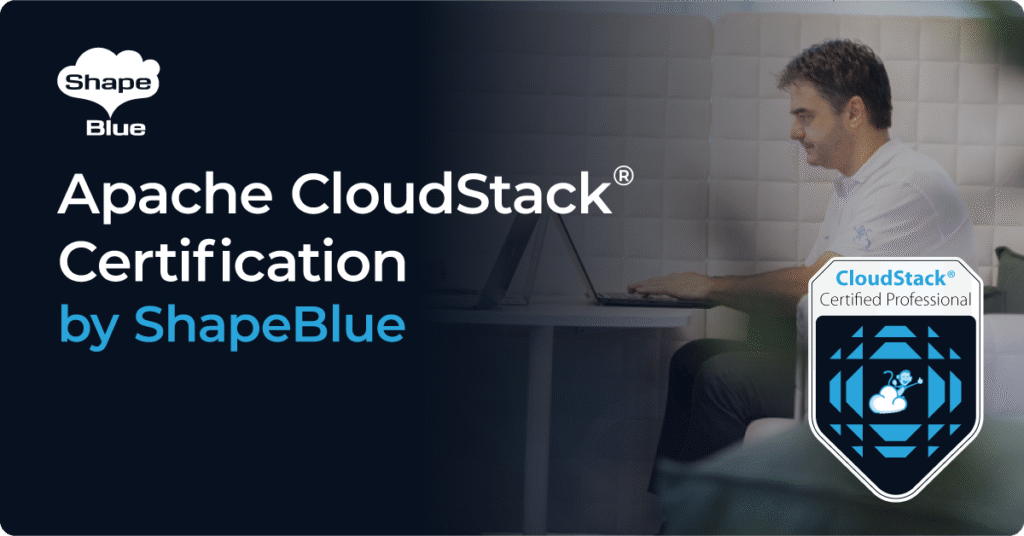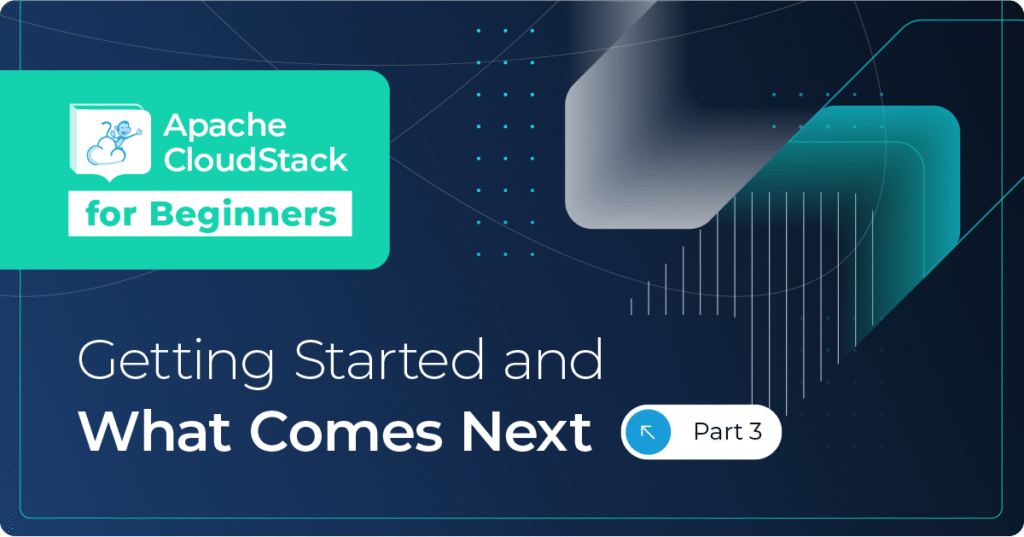UserData is an industry-standard used in IaaS cloud computing and has become a standard tool for cloud administrators and users alike. It provides a flexible and efficient way to configure and customize cloud instances during the deployment process.
UserData scripts are utilized as external resources – decoupled from Apache CloudStack – where users freely define what will be loaded during instance deployment. However, the decentralized model and lack of standards regarding UserData scripts can leave gaps when establishing compliance policy models. George Lawton highlighted this issue in his TechTarget article, “Centralized services as a hedge against shadow IT’s escalation.”
CloudStack Managed UserData
CloudStack Managed UserData is a new feature available in Apache CloudStack 4.18 that allows cloud administrators and users to store and manage their own UserData collections. Managed UserData can greatly simplify the process of configuring Instances and automating tasks, providing centralized configuration management, automated software installation, version control, template-based deployment, and compliance. Additionally, it can also aid in scalability as it allows organizations to scale their infrastructure by automating the process of creating new Instances with the same configuration.
Previously, CloudStack users only had the option of copying userdata scripts from an external source or even creating their own when deploying a new instance. This approach is still possible to provide flexibility for use cases with less stringent compliance policies.
CloudStack Managed UserData provides several benefits, particularly for those that use cloud infrastructure for their operations. Here are a few examples of how CloudStack Managed UserData can help:
• Automated provisioning
Can be used to automate the process of Instance provisioning. This can be useful for businesses that need to quickly scale their infrastructure to meet changing demands.
• Centralized management
Allows businesses to centrally manage the configuration of multiple Instances. This can be useful for businesses that have many cloud resources, as it eliminates the need to access each Instance individually.
• Compliance
Can be used to ensure that Instances are configured in compliance with organizational policies and regulations. This can be useful for businesses that need to meet specific compliance requirements, such as HIPAA or PCI-DSS.
• Cost savings
Can be used to automate the installation of software on multiple Instances at once. This can save money by reducing the need to manually install software on each Instance.
• Consistency
Allows users to deploy Instances with a consistent configuration. This can be useful for businesses that need to ensure that all Instances are configured in the same way, such as for security or compliance purposes.
• Version control
By version controlling the UserData collection, users can easily roll back to a previous version if there is an issue with the current version. This can be useful for organizations that need to make changes in some characteristics that might impact multiple Instances.
These are just a few examples of how CloudStack Managed UserData can be used, but the possibilities are endless. With CloudStack Managed UserData, you can automate many tasks that would otherwise need to be done manually, which can save time, and effort, and guarantee compliance policies.
Conclusion
In short, Apache CloudStack Managed UserData is a resource that helps organizations define their compliance policies by centralizing this process in a single endpoint. Usually, compliance policies bring greater complexity by increasing reliability. This feature manages to maintain compliance by centralizing the collection of UserData scripts, reducing complexity, and ensuring greater productivity and standardization.
This new feature is available in Apache CloudStack 4.18 LTS.
Marco Sinhoreli is a seasoned Technical Marketing Manager at ShapeBlue, with over 25 years of IT experience. As an Apache CloudStack expert and committer, he specializes in creating and delivering technical marketing content that bridges the gap between technology and business. Marco has consulted major companies on implementing IaaS solutions with CloudStack, focusing on delivering cloud infrastructure that supports both immediate and long-term business needs. When he’s not diving into cloud solutions, Marco loves playing guitar, exploring new places, and staying updated on politics.





